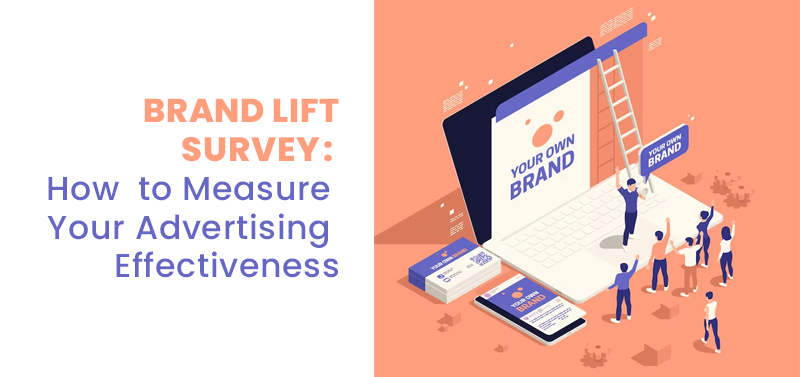November 14, 2021 8:19AM
Learn to Build a Premium Brand by Understanding Brand Equity

Have you ever wondered how Apple charges a premium for their products and people are still willing to queue up for their products?
It is because they have a very high brand equity.
Not every brand can command a premium like Apple. It is often a dilemma for brand owners to determine the optimum price for their products. If they charge too high, consumers may be put off and go to their competitors. On the other hand, if they charge too low, they may lose out on the opportunity to make optimal profits.
Brand Equity can solve this dilemma by measuring the willingness of a consumer to pay a premium for your brand. It is also used as a measure of Brand Value when company wants to put a price tag on their brand. The logic is simple; the higher your Brand Equity, the higher your ability to rake in profits, hence the higher the value of your brand.
What are the factors that determine Brand Equity?
To create a strong brand that consumers are willing to pay a premium for your products, your brand need to fulfil the following 4 key factors.
Factor 1: Exceed your consumer’s expectations to develop strong emotional connection with your brand
This is the most fundamental factor that every brand hoping to compete in the market should excel in.
Brands who can satisfy their customers will have customers returning to purchase more of their products or re-engage in other services.
Brands who exceed their customers’ expectations will create fervent customers who have strong emotional connection to their brands. These customers will be your promoters that will recommend your brands to their friends and family, fueling organic growth to your business. Furthermore, they are also more likely to purchase your products and services at a premium price; hence, contributing to your Brand Equity.
Therefore, it is important that Customer Satisfaction Research is conducted regularly with large sample sizes to identify any early issues with your products or services and address them in real time.
Factor 2: Stay ahead of your competitor brands in the minds of your consumers
Consumers always compare multiple brands before making a purchase. Although your brand may be meeting all of the consumer’s criteria, if your competitor is slightly ahead of your brand in the mind of the consumers, they will still choose your competitor. Hence, to command a premium price on your products, you need to stay ahead of your competitors in the minds of your consumers.
To stay ahead of the competition, you need to know where your brand stands among your competitors. Thereafter, you need to know how to improve your brand by understanding what your consumers think of your brand as compared to your competitors.
Brand Health Trackers can help you to measure the above, to help you improve and sustain a strong brand with high brand equity and revenue growth.
Factor 3: Be unique and irreplaceable
Prices of goods are dependent on supply and demand. If your consumers like your products and believe that your brand is the only brand that sells such products, naturally they will only buy them from you. In this case, you can charge a premium on your products and they will still purchase from you.
Factor 4: Be innovative and set industry standards
Consumers do not like to pay more for the same product. If you want to command a price premium, you need to convey to them that your brand is innovative and always conducting R&D to create cutting-edge market products. Consumers need to be convinced that they are paying for the best new innovative products on the market. After all, who wouldn't like to show to their friends their cool new toys?
That's why it is important to continuously innovate by investing product development research and be brave enough to invent new product concepts. Even though such endeavors can often be risky and incur high cost, this is a risk that every brand must take to build a strong Brand Equity.
This risk can also be minimized by conducting Product Innovation Research to ensure that your product has a market fit and will generate strong positive impact. Vodus Product Innovation Research includes consumer usage & attitude study, product concept test, price sensitivity measurement that will help you design and develop a successful product.
Calculating Brand Equity Score
To calculate the Brand Equity Score, you need to first conduct a survey to measure the 4 Brand Equity Factor scores using a 5-point Likert scale to measure consumers' level of agreement to these factors.
The example statements to measure the 4 factors for each brand are:
- I will recommend Brand to my friends and family
- Brand is my top choice in the market category
- Brand is unique and irreplaceable
- Brand is an innovative and progressive brand
These statements can vary to suit the context of the product and market while maintaining the meaning behind the statements.
The factor score for each statement is obtained by averaging over a representative sample of your target consumers who are aware of the said brand. The Brand Equity Score for a brand is then calculated by combining the factor score for each statement.
Repeat this Brand Equity Score calculation for every brand in the market to compare how your Brand Equity Score stack against your competitors.
Using Brand Equity Score to calculate optimal pricing
Brand Equity Score can be used to calculate the optimal price based on your relative Brand Equity Score with your competitors. To calculate the optimal price:
- Plot the Average Brand Price vs Brand Equity Score (BES) chart for each brand
- Perform linear regression on the dataset
- Input your Brand Equity Score into the best fit linear function to obtain your optimal price
The average brand price value for each brand can be obtained by using either the price of a benchmark product or the average price of a range of product categories.
Your Average Brand Price vs BES chart dataset may have wide scatter range which results in a linear function with poor confidence level. This is due to your competitors’ brands not optimizing their pricing base on their BES. In this case, you can still use the linear function to determine your optimal pricing, as it is still better than setting a price based on your gut feeling.
How can Vodus help you build Brand Equity?
By having the largest online panel in Malaysia via our Vodus Media Network that has a combined sampling frame of 17 million consumers, Vodus is best suited to help you gather the most accurate and representative data to calculate your Brand Equity Score.
Vodus can help you measure and improve your Brand Equity with our Brand Health Tracker, Customer Satisfaction Research and Product Innovation Research solutions. We will survey your target consumers to measure your brand performance, consumer perception and customer satisfaction to diagnose the underlying issues with your brand and construct a strategy to improve your Brand Equity.
Contact us in the form below to let us help you increase your brand value.













